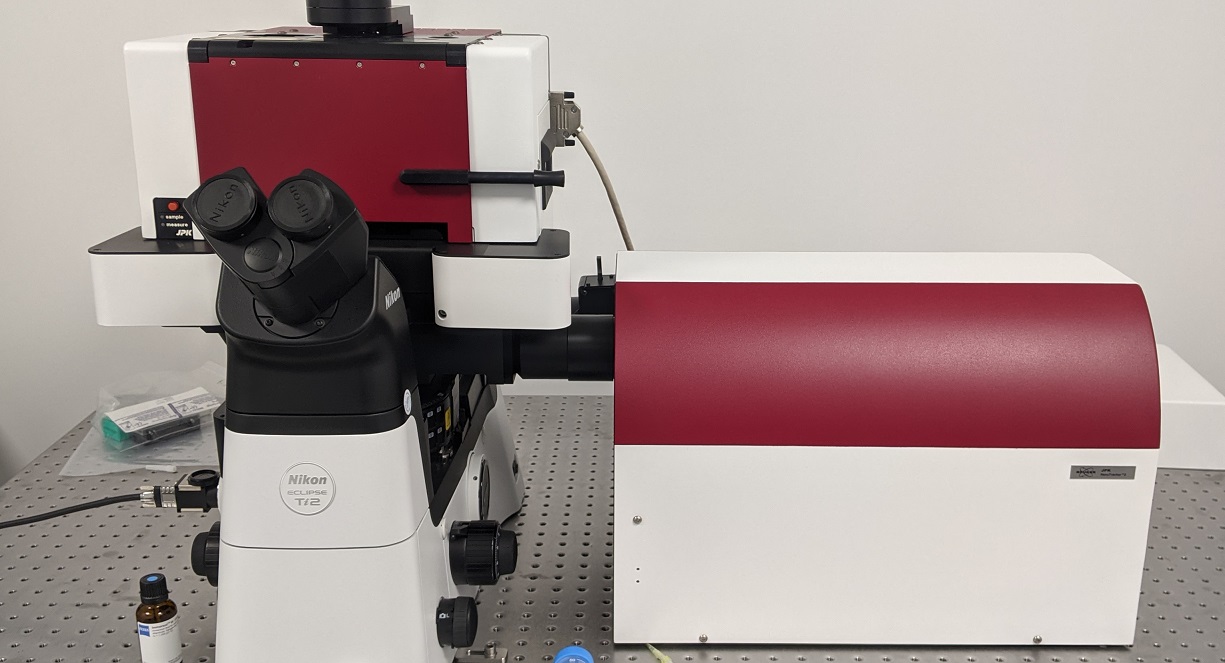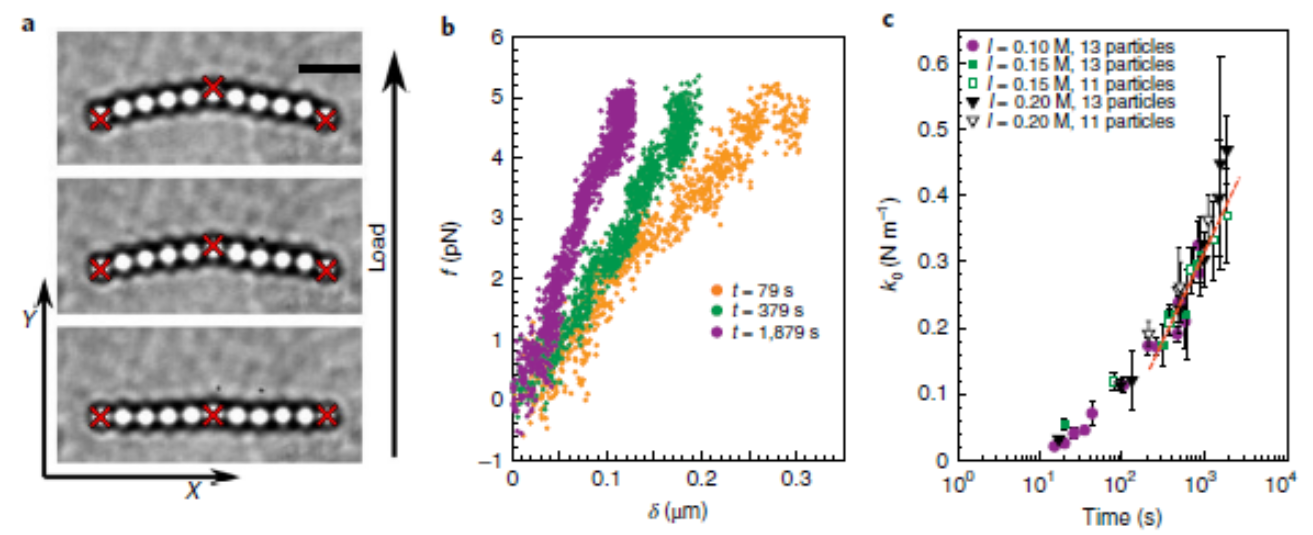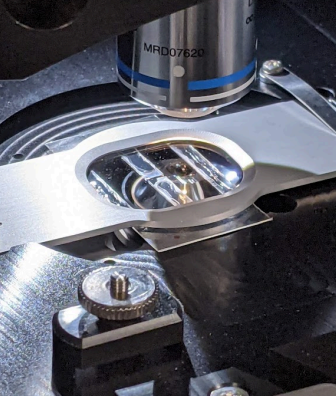
Optical Tweezers
An optical tweezers setup was set up at Laboratoire Navier during autumn 2021 through a joint funding from the Île-de-France region (SESAME funding), the École Nationale des Ponts et Chaussées and the École des Ponts Foundation. Optical tweezers allow experimentalists to trap and move small objects (a few µm) in a very precise fashion (of the order of a nm) using pairs of laser beams. This type of device is heavily used in biology, since it allows researchers to manipulate cells and DNA molecules. Surprisingly, it is seldom used in materials science, as only two other similar devices are known to be used (as of 2024) : one in the USA (in the group of Eric Furst, U. Delaware) and one in China (at the University of Science and Technology of China).
In Laboratoire Navier, this device has been used to identify the aging mechanism in concentrated colloidal suspensions. These materials are widely used in a broad range of industrial sectors e.g., environment (muds, clays, silts), cosmetics (toothpaste, body lotions), food (spreads, yogurt), oil (drilling muds), additive manufacturing (cement, raw earth) industries. They are made up of micron-sized particles suspended in an aqueous solution. One of their most striking characteristics is that their mechanical properties (their linear elastic modulus and their yield strength) increase with rest time: this is known as aging.
While the mechanism behind aging has been debated, the existing consensus was that microstructural rearrangements were responsible for it. We chose to take the opposite view and examine whether a system with a fixed microstructure could reinforce over time – in other words, whether it could age. To do so, we needed to build an elementary concentrated suspension, to freeze its microstructure and then to assess its mechanical properties over time.
3 µm diameter particle being moved 40 µm back and forth at several (constant) speeds.
A 😀 emoji of 3 µm latex particles is formed using optical trap multiplexing. The traps are then all deactivated at the same time, releasing the particles (which then sediment). Credits : Antoine Aubel

Fig. 1 : (a) Three-point flexural test on beams of silica particles of diameter 1µm. (b) Force as a function of the beam deflection for three rest times. (c) Flexural stiffness as a function of rest time for several ionic strengths and beam lengths.
This technical challenge was met using attractive, spherical, micron-sized particles and optical tweezers. The optical tweezers setup is well-suited to explore such scales and the range of forces at play — of the order of 10 pN, the same order of magnitude as van der Waals forces. Through optical tweezer manipulation, we have shown that pairs of silica particles put into contact nearly instantly form a solid-solid contact, hinting that microstructural rearrangements are unlikely in these systems. We then took inspiration from a previous study of the group of Prof. Eric Furst and used the optical tweezers to build — particle by particle — a 11-particle beam that could be solicited in a three-point flexural test. We have shown that these beams possess a finite flexural modulus and strength, implying that inter-particle contacts present slip and rolling resistance (pairs of particles can neither slide or roll relative to each other). This experiment allows us to measure both the linear elastic modulus of the beams and the critical moment above which they fail, as a function of the rest time of the beam, i.e. the time elapsed after its formation. Strikingly, the flexural strength of these materials increases over time, confirming that contact aging is present.
If one relates the macroscopic mechanical properties of the material made of the silica beads — the elastic modulus and yield stress obtained through rheometry — to the microscopic mechanical strength of the particle beams, one finds a linear relationship between these two quantities, without any adjustable parameter. We then attribute the time evolution of the elastic modulus of attractive silica suspensions to the reinforcement with time of contact rigidity between particles instead of micostructural rearrangements. In the same fashion, the bulk yield stress is directly related to the critical flexural moment above which particle beams fail under load. Research on the subject is still ongoing, since we now want to investigate how surfactants and polymers in solution may change the contact properties between particle pairs — and whether this impact can be felt at the bulk scale.

Sample (mounted on a glass slide) inserted between the two microscope objectives of the optical tweezers setup.
References
- Contact and macroscopic aging in colloidal suspensions, F. Bonacci, X. Chateau, E. M. Furst, J. Goyon and A. Lemaitre, Nature Materials, 19, 775-780 (2020).
- Yield stress aging in attractive colloidal suspensions, F. Bonacci, X. Chateau, E. M. Furst, J. Goyon and A. Lemaitre, Physical Review Letters 128, 018003 (2022).
- Adjuvantation de suspensions modèles : caractérisation multi-échelle, Antoine Aubel, PhD thesis (2023).


